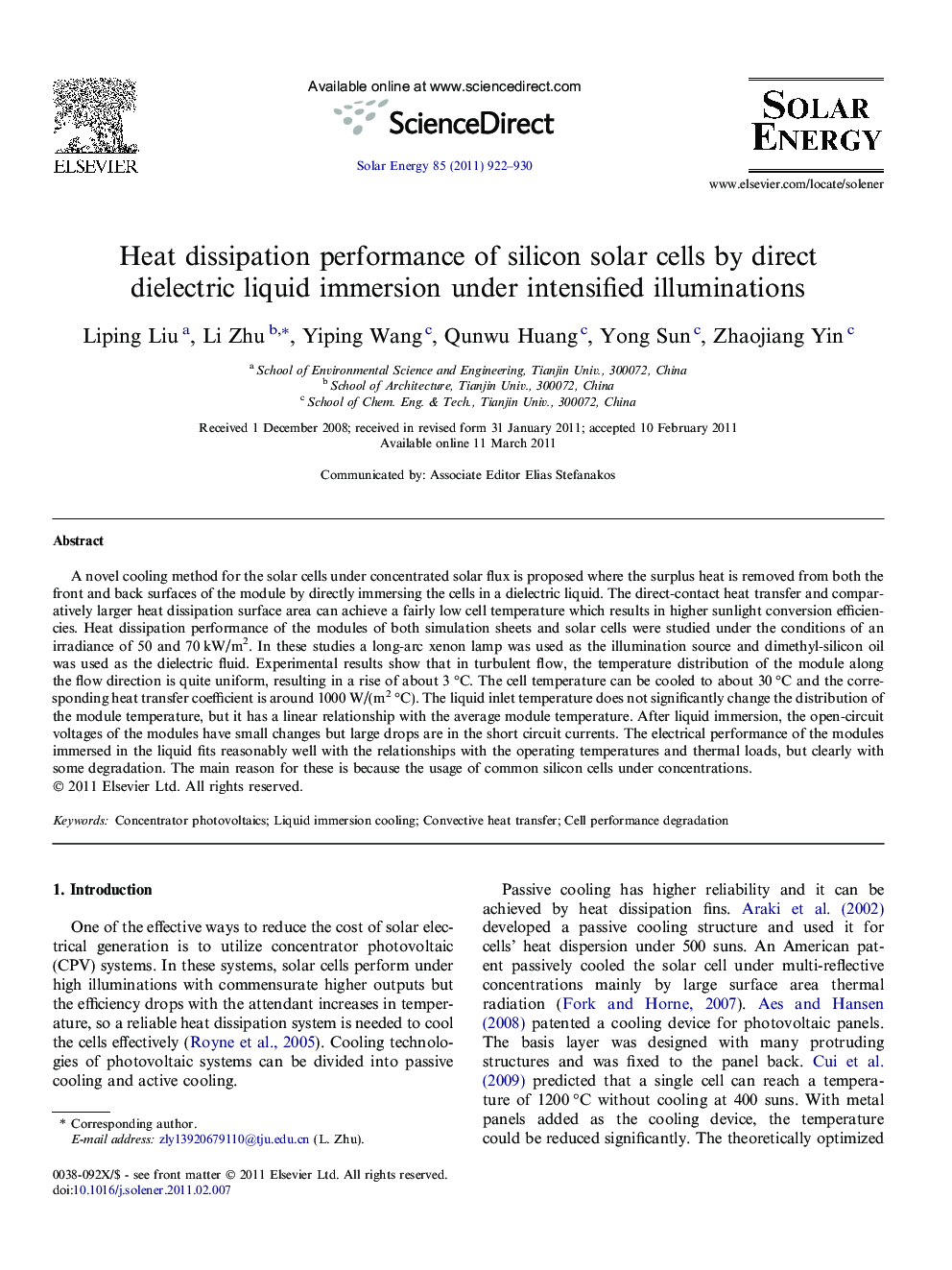| Article ID | Journal | Published Year | Pages | File Type |
|---|---|---|---|---|
| 1550761 | Solar Energy | 2011 | 9 Pages |
A novel cooling method for the solar cells under concentrated solar flux is proposed where the surplus heat is removed from both the front and back surfaces of the module by directly immersing the cells in a dielectric liquid. The direct-contact heat transfer and comparatively larger heat dissipation surface area can achieve a fairly low cell temperature which results in higher sunlight conversion efficiencies. Heat dissipation performance of the modules of both simulation sheets and solar cells were studied under the conditions of an irradiance of 50 and 70 kW/m2. In these studies a long-arc xenon lamp was used as the illumination source and dimethyl-silicon oil was used as the dielectric fluid. Experimental results show that in turbulent flow, the temperature distribution of the module along the flow direction is quite uniform, resulting in a rise of about 3 °C. The cell temperature can be cooled to about 30 °C and the corresponding heat transfer coefficient is around 1000 W/(m2 °C). The liquid inlet temperature does not significantly change the distribution of the module temperature, but it has a linear relationship with the average module temperature. After liquid immersion, the open-circuit voltages of the modules have small changes but large drops are in the short circuit currents. The electrical performance of the modules immersed in the liquid fits reasonably well with the relationships with the operating temperatures and thermal loads, but clearly with some degradation. The main reason for these is because the usage of common silicon cells under concentrations.
